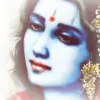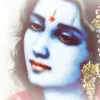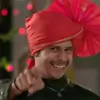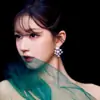Originally posted by: metacrisis
So basically, 90% of Krishna's cowherd iconography comes from Srimad Bhagvatham and that side of the scriptures, right?
Just for a count though, how many versions of daughters does Yashoda have in total? 
I've read some scholars say the whole backstory of Krishna was added later to bring a more humane and down-to-earth picture of the great statesman. You also mention that Harivamsa's version might have been a later addition. Do you think the entire idea of Krishna-the-cowherd came about later or was there at least a hint of this image in MB or other scriptures closer in time to the majority of MB?
I haven't read Harivamsa as a whole yet, it seems very fact-focused as opposed to a more relaxed pace of MB (as you also mentioned). Do you happen to have a link to a PDF? 
Thanks for compiling this, your posts are always an interesting read!
I am not qualified to say where the iconography appears first: in paintings, sculptures, oral tradition, or written texts in vernacular or classical languages.
Yaśodā's daughter is mentioned at three places in Harivaṃśa (critical edition): first she is an incarnation of Nidrā and deified as Kauśikī; then Kaṃsa describes her worship as Vindhyavāsinī; then when Kṛṣṇa returns from Prāgjyotiṣa, we are informed that "the girl for whose sake Kṛṣṇa killed Kaṃsa" grew up in the Vṛṣṇi family and she is Ekānaṃśā, holding hands with her two brothers.
The Tamiḻ poem Cilappadhikāram portrays the worship of Ǒṉṟaṉpakuti (= Ekānaṃśā), referring to her as Piṉṉai (= Anujā) holding the hands of Māyavaṉ (= Kṛṣṇa) and Tammuṉōṉ (= his elder brother). Here, she seems to be Kṛṣṇa's lover although her name suggests that she is his sister.
Piṉṉai evolved into the character of Nīlā, identified as the daughter of Yaśodā's brother Kumbhaka. The myth of Kṛṣṇa subduing seven bulls moved from the Ǒṉṟaṉpakuti dance into Nīlā's marriage in manuscripts of Harivaṃśa, and then Bhāgavata-purāṇa transferred it to Kṛṣṇa's marriage to Satyā Nāgnajitī. Even later, Brahma-kāṇḍa of Garuḍa-purāṇa tries to merge these three characters through the story that Kṛṣṇa granted a girl's wish: "When you take birth as Kṛṣṇa, I want to be with you from the very first day, and I want to marry you before anyone else." Although the present text of the story only tells us that miraculously Nīlā became one with Nāgnajitī, and doesn't tell us anything about Yaśodā's daughter, the allusion to a girl being with Kṛṣṇa from the first day of his life can only refer to Yaśodā's daughter being born on the same night.
The tithi was navamī by the time Yaśodā's daughter was born. In some Jaina versions, Kaṃsa disfigures her nose and so she is called Ekanāsā (single-nostril). The names Ekanāsā and Navamikā belong to two of the Dikkumārī deities protecting the West in Jaina geography. In some Jaina versions, Satyabhāmā is Kaṃsa's sister and a contest for her marriage is the pretext that brings Kṛṣṇa from vraja to Mathurā, but I haven't found a story in which Kṛṣṇa kills Kaṃsa for the sake of Ekānaṃśā as alluded by Harivaṃśa.
In one of the Jātaka stories, Ghata-paṇḍita-Jātaka, ten girls born to a slave-woman named Nandagopā are exchanged for ten boys born to her royal mistress Devagabbhā, and it is Devagabbhā's own firstborn daughter, Añjanadevī, who may correspond to Ekānaṃśā. Her brothers realize that they forgot to give her a share of their kingdom (the word "anaṃśā" does not appear in the story) and she is the sole survivor (ekā) after her brothers Vāsudeva, Baladeva, and the rest are killed.
Kṛṣṇa's people are identified as Gopa and Nārāyaṇa when they fight in the Mahābhārata War alongside Saṃśaptakas (from Trigarta) and Yavanas. Subhadrā dresses as a gopālikā to enter her marital home. Harivaṃśa introduces Vasudeva as a gopa. So, it's not that Kṛṣṇa went from statesman to cowherd; rather, cows were the wealth that made his family equal to other royals, and the distinction between Mathurā and vraja has gradually widened as the story is retold. (Not only figuratively but literally! In Harivaṃśa, Mathurā and vraja appear to be on the same side of Yamunā; in Bhāgavata-purāṇa, Vasudeva has to cross the river.) The value of cattle for royalty is seen when Duryodhana goes for ghoṣayātrā, when Suśarman and Duryodhana conspire for gograhaṇa (seizure of Virāṭa's cattle), when Kṛṣṇa seizes Bāṇa's cattle for Satyabhāmā, and in royal characters' names like Govāsana and Damaghoṣa.
An English translation of Harivaṃśa (critical edition) by Simon Brodbeck was published just a few years ago.
Edited by BrhannadaArmour - 3 years ago



























